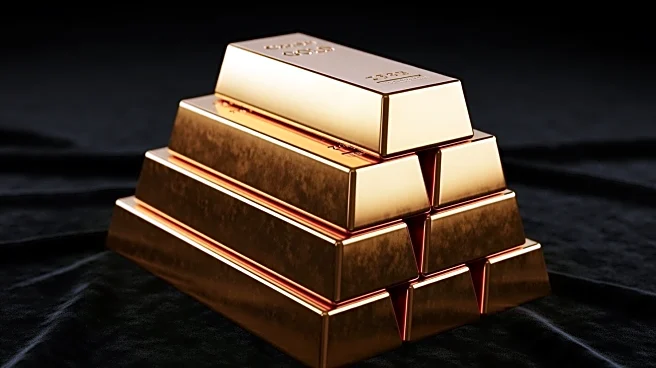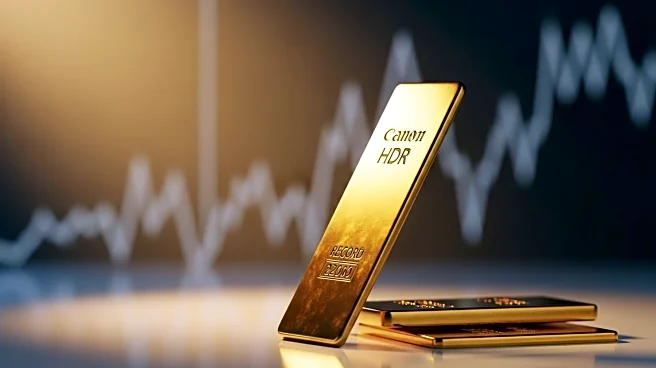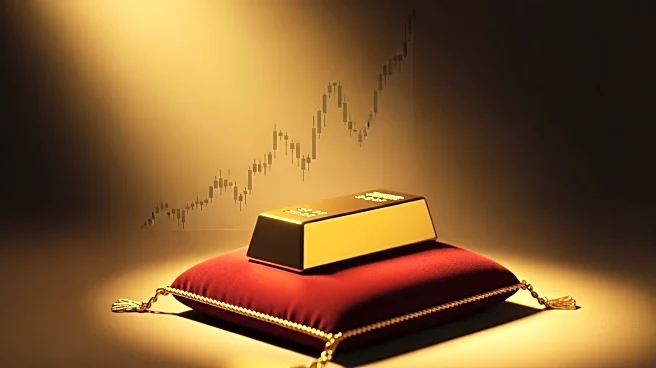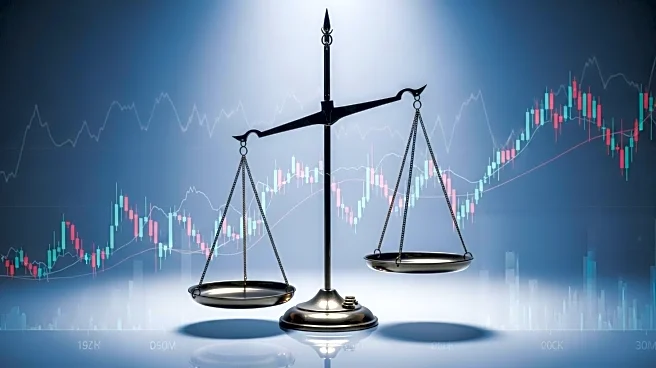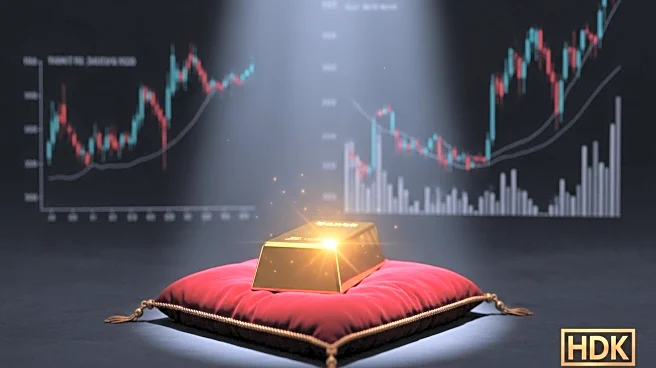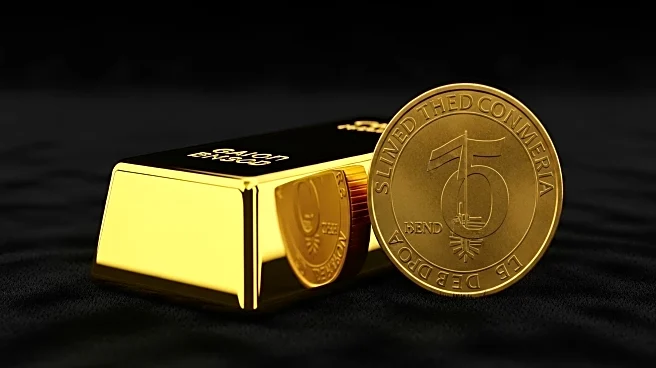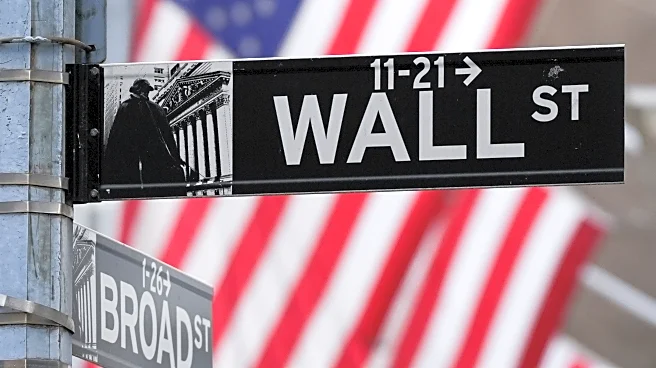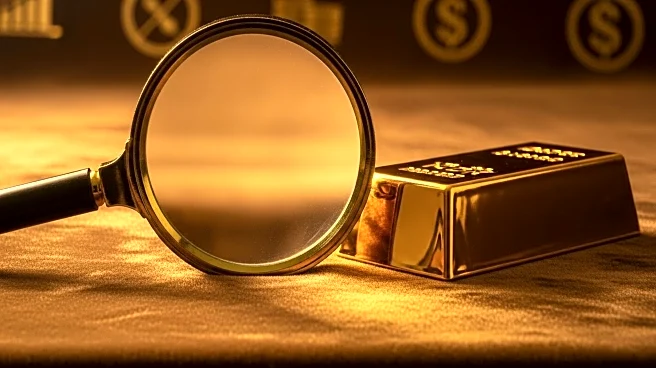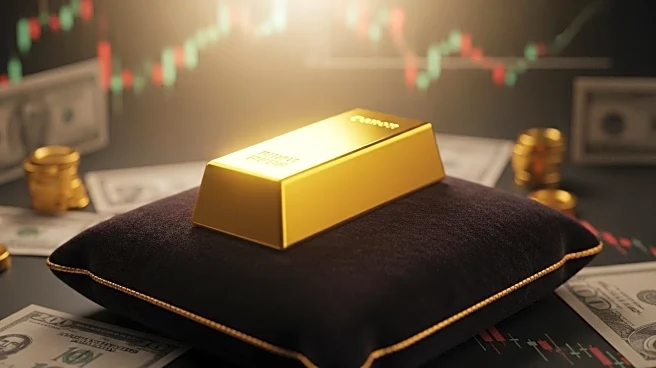What's Happening?
Gold prices have reached a new record high, surpassing $4,100 per ounce, driven by expectations of a U.S. Federal Reserve interest rate cut and heightened trade tensions between the United States and China.
Spot gold increased by 0.4% to $4,126.47 per ounce, following a peak of $4,179.48 earlier in the session. U.S. gold futures for December delivery also saw a rise, gaining 0.2% to $4,142.60. The metal has experienced a significant surge of 57% this year, breaking the $4,100 barrier for the first time. Factors contributing to this rally include geopolitical uncertainties, strong central bank buying, and robust ETF inflows. Analysts from Bank of America and Societe Generale predict that gold could reach $5,000 per ounce by 2026.
Why It's Important?
The surge in gold prices reflects broader economic and geopolitical dynamics, including the ongoing trade tensions between the U.S. and China and expectations of further monetary easing by the Federal Reserve. Gold is traditionally seen as a safe-haven asset, attracting investors during times of uncertainty. The potential rate cut by the Fed could lower interest rates, making non-yielding assets like gold more attractive. Additionally, President Trump's threats to impose 100% tariffs on Chinese goods and the broader trend of de-dollarization are contributing to the bullish outlook for gold. This development could impact various stakeholders, including investors, central banks, and industries reliant on gold.
What's Next?
Investors are closely monitoring upcoming events, including a meeting between President Trump and Chinese leader Xi Jinping in South Korea, which could influence trade relations further. Additionally, Fed Chair Jerome Powell's speech at the NABE annual meeting is anticipated to provide more insights into future monetary policy. Markets are expecting a 25-basis-point rate cut at the Fed meeting this month, with another reduction likely in December. These developments could continue to support gold prices, while also affecting other precious metals like silver, platinum, and palladium.
Beyond the Headlines
The current rally in gold prices highlights the ongoing shift in global economic dynamics, including the de-dollarization trend and the strategic importance of precious metals in international trade and finance. The geopolitical tensions and monetary policy decisions are not only influencing commodity markets but also reflecting broader shifts in global power structures and economic strategies.
